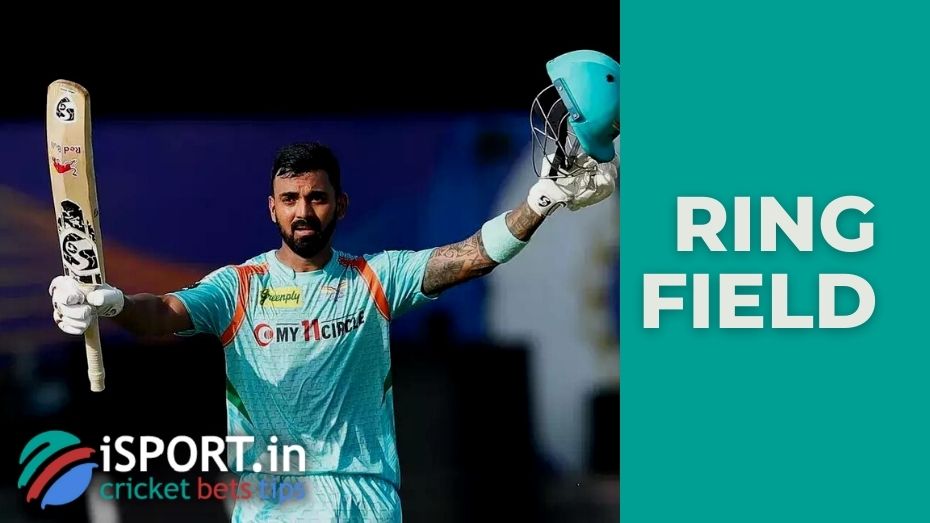Ring field

The Ring field is a specific cricket term that refers to a ring of attacking field players located in front of the wicket. These positions have the following names:
- Square leg;
- Midwicket;
- Mid on;
- Mid off;
- Cover;
- Point.
A synonym for the Ring field is the Inner ring. The main task of the players who occupy these positions is to prevent the opposing team’s batsman from gaining wounds. They are usually approximately 35 meters away from the batsman.
- Square leg is perpendicular to the gate on the Leg side. As a rule, there is a judge next to him, so it is quite easy to calculate the location of this player on the Ring field. The square leg must have an excellent reaction and high speed of movement since there is a considerable distance between him and Midwicket, which he must be ready to cover in case the batsman decides to send the ball exactly in this interval. The Square leg player is indispensable when the batsman prefers hooks or sweep shots. Often he is backed by the Backward Square Leg – a player in a position that can be called a duplicate one with the clarification that it is located not on the wicket line but a few meters behind it. When choosing fielders for both of these positions, captains try to preference athletic and tough team members.
- Midwicket – A vital position that sits closer to the edge of the Ring field on the Leg side, just above the bowler line. It is considered one of the key ones since most of the batsman’s reflective strikes fall in this zone. The player who plays the Midwicket must be agile and read the field well when interacting with the bowler. If he does his job at a good enough level, then he is quite capable of causing serious trouble for the opponent’s batsman.
- Mid on and Mid off. Two positions are closer to the ring field behind the bowler’s back. Their functionality is very similar, with the difference that Mid on is on the Leg side and the Mid off is on the Off side. Fielders who trust the Mid on or the Mid off should prevent successful drives from enemy batsmen, not allow them to run and, of course, back up each other. One of the main features of the Mid on and the Mid off is that these positions provide an opportunity to see the entire Ring field, so captains often prefer to occupy one of them themselves.
- Cover. Another important position, which in turn is supported by the Extra Cover fielder. It is located at the edge of the Ring field between it and the Point (Off Side). On the one hand, a player who is trusted with it must be fast enough. On the other hand, he must have a lot of experience in performances, since his task, on the one hand, is to secure the bowler, and on the other, to prevent the ball from leaving the field. In fact, it is precisely those fielders who are on the Cover and the Extra Cover, as well as Midwicket, who occupies a mirror position, with the proper skill, they can make the batsman wrong and quickly send him out. The Extra Cover is often left empty, but the captain can put a separate fielder on it if the opposing batsman is playing aggressively enough.
- Point as well as Backward Point. They are located on the Off side approximately on the batsman’s line (the exact location depends on the playing characteristics of the bowler: for example, if there is a fast bowler on the opposite side, then the Point fielder may noticeably shift to the side). Since the overwhelming majority of bowlers focus on the Off stump, the ball often leaves the batsman’s bat precisely in this Ring field. Hence, captains prefer to bet the most enduring players on the Point and the Backward Point, who have an excellent reaction and can intercept the ball in a jump or diving under the blow. Sometimes the Point remains unoccupied: for example, if the rebound is stronger than usual, the captain can rotate by moving the fielder from this position to the Backward Point.
Interestingly, the captain can leave this or that position on the Ring field free, depending on the plan for a specific match. So, for example, if the captain sees that the opponent’s batsman is not experienced enough and is mastering, he may not put the player on the Cover, hoping that the bowler will send him out soon.
